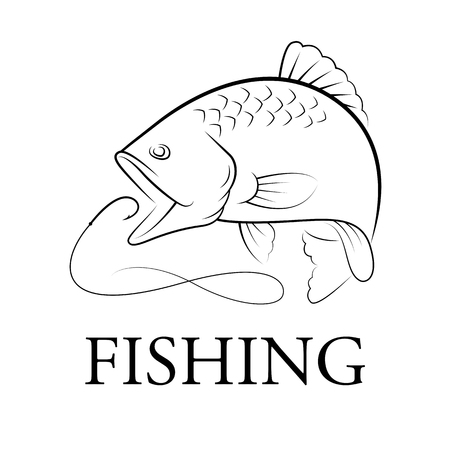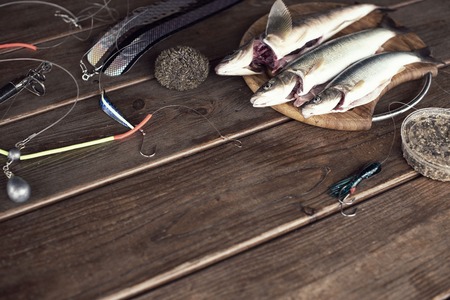Understanding Bream and Tench Feeding Habits
To master groundbaiting for bream and tench, it’s essential to first understand their feeding preferences and behaviour within British waters. Both species are renowned for their shoaling tendencies, particularly in the warmer months when they gather in large numbers over silty bottoms and around marginal shelves. Their diet is dominated by natural food sources such as bloodworm, small snails, aquatic insects, and detritus, which they sift from the substrate using their sensitive barbels. Bream typically favour open water or gently sloping shelves, often rooting about in the silt with their mouths downturned. In contrast, tench prefer slightly weedier margins or lily-strewn areas where they can forage undisturbed.
Seasonal variations also play a significant role in shaping feeding patterns. During spring and early summer, both species become increasingly active as water temperatures rise, making them more responsive to groundbaiting efforts. At this time, their energy requirements surge due to spawning activity, so they’re on the lookout for high-protein offerings. As autumn approaches and temperatures cool, their appetite remains robust but starts to wane as winter sets in, requiring a more cautious approach to baiting.
Observing these habits in your local venue—whether it’s a classic fenland drain or a well-established estate lake—will allow you to tailor your groundbait mix and tactics accordingly. By tuning into their dietary cues and seasonal rhythms, you’ll set the stage for attracting impressive shoals of both bream and tench, paving the way for memorable sessions on the bank.
Choosing the Right Groundbait Mix
When it comes to drawing in large shoals of bream and tench, your choice of groundbait mix is absolutely crucial. The right blend not only attracts these shoal fish but keeps them grubbing about in your swim for longer sessions. Here, we’ll explore the key ingredients, traditional British formulations, and a few expert tips to help you get it just right.
Key Ingredients for Bream and Tench
The backbone of any effective groundbait for bream and tench lies in its ability to create an enticing aroma trail and a lingering cloud in the water. Below is a breakdown of staple components used across the UK:
| Ingredient | Purpose | Notes |
|---|---|---|
| Bread Crumb | Bulk & binding agent | Forms the base; softens quickly for easy feeding |
| Sweetcorn (ground or whole) | Scent & visual appeal | Bream especially love the sweetness; adds colour flecks |
| Fishmeal | Protein-rich attractor | Increasingly popular; best in warmer months or when targeting specimen fish |
| Maggots/Casters (dead or live) | Natural food source | Adds movement and scent; ideal for holding fish in the swim |
| Molehill Soil/Leam | Binds mix, adds weight & creates cloud | Aids delivery of loose feed deeper; old-school but still highly effective on UK waters |
| Sugar Beet Pulp/Pellets | Slow breakdown, sweet scent | Keeps fish rooting around for longer periods |
| Aniseed/Hempseed (crushed or whole) | Scent & oil release | Tench respond well to hemp, especially early season or dawn raids |
Mixing Tips from the British Bank Side
The secret to a winning groundbait isn’t just what goes in—it’s how you prepare it. For bream and tench, always mix your groundbait at least half an hour before you intend to use it. This allows dry particles to absorb moisture fully, preventing premature breakdown as it sinks. Add water gradually until you achieve a crumbly texture that binds lightly when squeezed yet breaks apart easily once on the bottom.
Traditional UK Formulations: Tried-and-Tested Blends
- The Fenland Classic: 50% brown crumb, 25% sweetcorn, 15% crushed hemp, 10% molehill soil—ideal for slow-moving rivers and silty estate lakes where wary tench patrol.
- The Gravel Pit Special: 40% white crumb, 30% fishmeal-based commercial mix, 20% caster/maggot, 10% sugar beet pulp—perfect for clear gravel pits with large bream shoals.
Top Tip:
If you’re expecting skimmers as well as slabs (big bream), keep your mix on the light side with less binding agent; this lets smaller particles flutter down and draw fish through all layers of the water column.
Cultural Notes: A Nod to Tradition and Modern Tactics
British anglers have long prized subtlety over saturation. While European blends often favour heavy fishmeals and strong aromas, here in the UK many still swear by understated mixes featuring natural ingredients—think breadcrumbs laced with local molehill soil and a whisper of sweetcorn or hemp. It’s a gentle invitation rather than an overpowering feast—just enough to keep those cautious shoal fish interested but not spooked.
With your groundbait mix expertly chosen and prepared, you’re well set to tempt those legendary bream slabs and battling tench under quintessentially British skies.

3. Groundbait Delivery Methods
Delivering groundbait effectively is the linchpin in attracting sizeable shoals of bream and tench, with your choice of method greatly influenced by venue characteristics, water clarity, depth, and required casting distance. Three classic British approaches stand out: balling in, feeder tactics, and deploying spod mixes—each deserving a place in the well-rounded angler’s repertoire.
Balling In: The Traditional Tactic
Balling in epitomises the old-school charm of coarse fishing on lakes and slow-moving rivers. Here, groundbait is squeezed into compact balls, often golf-ball to orange-sized, then thrown or cupped out to create a concentrated patch. This method excels when fishing at short to medium range (up to 25 yards), particularly where precision and stealth are vital. On intimate estate lakes or winding canals typical of the British landscape, balling in brings an inviting cloud and scent trail that settles seductively on the bottom, drawing bream and tench from their lairs.
Feeder Tactics: Precision with Every Cast
For greater accuracy and distance—or when targeting wary fish in deeper or more pressured waters—feeder fishing comes into its own. Cage or open-end feeders allow you to deliver neat parcels of groundbait directly to your rig. With each cast, a fresh offering lands near your hookbait, maintaining an enticing feed zone. Adjusting the composition for slower breakdown (with more crumb or binding agents) or rapid dispersal (with lighter mixes) lets you tailor your approach to suit current, depth, and fish activity—a hallmark of thoughtful English angling.
Spod Mixes: Long-Range Attraction
When pursuing specimen bream and tench at range—perhaps across expansive gravel pits or reservoirs—spodding comes to the fore. A spod rocket filled with a mix of groundbait, hempseed, sweetcorn, chopped worm or pellets delivers hefty payloads far beyond throwing distance. This technique lays down a broad bed of feed, perfect for encouraging large shoals to graze confidently over a wide area. Spodding also allows for incorporating larger free offerings alongside crumb and particles, reflecting modern UK trends for targeting bigger fish on pressured venues.
Matching Method to Venue & Conditions
The discerning angler reads the water before committing to a delivery method. On intimate stillwaters where stealth rules, balling in is ideal; on deep or busy stretches where precision counts, feeders shine; while spodding dominates vast venues demanding distance and volume. Always factor in wind direction, undertow strength, water clarity, and fish behaviour—hallmarks of classic British watercraft—when deciding how best to lay your groundbait foundation for memorable sessions with bream and tench.
4. Prime Spots and Timing for Groundbaiting
If you’re serious about drawing in impressive shoals of bream and tench, the art of groundbaiting begins with picking the right swim and nailing your timing. Veteran UK anglers know that it’s not just about lobbing bait—success lies in reading your water, understanding fish habits, and tuning into subtle shifts that mark prime feeding windows.
Finding the Perfect Swim
Bream and tench are creatures of comfort, gravitating towards specific features in stillwaters, canals, and slow-flowing rivers across Britain. Look for the following characteristics when selecting your peg:
| Water Feature | Why It Matters |
|---|---|
| Mildly Sheltered Bays | Provides safety and natural food accumulation; ideal for shoaling species. |
| Lily Pads & Weed Beds | Tench especially love cover; bream often skirt these areas for detritus. |
| Silt Patches or Depressions | Bream root around in silt for bloodworm and natural grub. |
| Drop-offs & Ledges | Offer transition zones where fish move during feeding spells. |
| Mild Flow or Inlets | Brings oxygen and food; attracts larger concentrations at key times. |
Reading Water Like a Local
Keen observation is a British angler’s best ally. Watch for rolling bream at first light, pinprick bubbles from tench nosing in silt, or slicks forming over your chosen spot. The presence of fry scattering or gentle surface dimples can also signal activity beneath. Don’t be afraid to move if your swim feels ‘dead’ after an hour or two—mobility can make all the difference on pressured venues.
Timing Your Groundbaiting – When to Make Your Move
The rhythm of UK waters changes with the seasons and weather, but certain periods consistently produce better action:
| Time of Day | What to Expect | Best Tactics |
|---|---|---|
| Dawn (First Light) | Bream shoals patrol margins; tench bubble quietly near weed beds. | Pre-bait late evening prior; introduce initial feed gently as you set up at dawn. |
| Late Morning to Early Afternoon | Fish drift deeper or further out as light intensifies. | Top up swim sparingly; use finer particles to keep them grubbing without overfeeding. |
| Dusk into Early Nightfall | Bream gather confidence and return to shallower shelves; tench become active again. | Add more groundbait in measured doses; consider switching to richer mixes with chopped worm or caster. |
Tuning In: Local Knowledge Counts!
Don’t underestimate the power of a casual bankside chat with locals—many a secret ‘hotspot’ has been revealed over a cuppa by the water’s edge. Combine this local insight with your own observations for a truly tailored approach to every session.
5. Essential Tackle and Set-Up
When it comes to groundbaiting for substantial shoals of bream and tench, your choice of tackle and set-up can make all the difference between a blank day and a memorable haul. British anglers have long refined their kit to suit the nuances of our stillwaters, where these species thrive.
Rods: Picking the Right Tool for the Job
A classic 11-13ft feeder rod is often the go-to for many seasoned coarse anglers targeting bream and tench. For larger venues or when casting further into open water, opt for a 12ft model with a progressive action – this allows you to accurately deliver both groundbait feeders and hookbaits at distance without losing finesse during the fight. A lighter quiver tip, rated between 1oz and 2oz, is essential for registering those delicate bites typical of wary tench or shy-biting bream.
Reels: Smooth and Reliable
A dependable fixed spool reel in the 3000–4000 size range pairs perfectly with feeder rods for this style of angling. Look for models with a smooth drag system – crucial when playing hefty slabs or bullish tench on light lines. Spool up with quality mono in the 4-6lb bracket; this strikes the right balance between subtlety and strength for most British waters.
Rigs: Keeping Groundbait Where It Matters
The humble cage feeder reigns supreme for introducing groundbait tight to your hookbait. Choose medium to large sizes depending on distance and tow conditions. Pair these with a simple helicopter or running rig setup – both have a proven track record on UK stillwaters. Hooklengths should be fine but robust, typically 0.13–0.17mm fluorocarbon or mono, and around 18–24 inches in length to allow natural bait presentation over your feed.
Hook Choice
Select size 14–16 wide-gape hooks for worm, maggot, or corn presentations, ensuring reliable hook-ups without overpowering your bait’s natural movement.
Final Touches
Don’t neglect subtle extras such as line markers or stop knots to maintain precise casting accuracy session after session. This attention to detail ensures your groundbait remains concentrated, drawing and holding shoals exactly where you want them – right over your waiting hookbait.
6. Adjusting Tactics for Pressured Waters
When targeting bream and tench on heavily fished UK venues, a more thoughtful and adaptive approach to groundbaiting is essential. The high angling pressure found at popular lakes and commercial fisheries means that fish quickly wise up to standard tactics, making it crucial to refine your strategies if you wish to draw in the larger shoals and outwit both the fish and fellow anglers.
Refining Groundbait Quantities
In pressured waters, less is often more. Overfeeding with heavy balls of groundbait can easily satiate or spook wary fish. Instead, consider introducing smaller, more frequent offerings—either by hand, catapult, or a pole cup. This mimics natural feeding scenarios and keeps fish confidently searching for morsels without gorging themselves or becoming suspicious of an obvious banquet. A light initial carpet of fine, crumb-based mix, laced with just a scattering of particles such as sweetcorn or chopped worm, can keep a shoal grubbing around for longer periods.
Choosing Distinctive Flavours and Additives
With so many anglers on the bank using similar mixes, adding unique twists to your groundbait can make all the difference. Experiment with subtle flavours like coriander or fennel seed for tench, or sweet enhancements such as molasses for bream. Avoid overpowering scents that might deter cautious specimens; instead, opt for gentle attractors that give your swim a signature aroma without overwhelming the fish’s senses.
Adapting to Conditions and Observations
Regularly observe how the fish respond to your feed. If activity slows or bites dwindle, resist the urge to introduce more bait immediately. Sometimes switching to a smaller hookbait over a sparse bed of groundbait, or even resting your swim for half an hour before reintroducing a modest helping of feed, can reignite interest. Staying mobile and observant—adjusting your approach based on wind direction, water clarity, and fish behaviour—will help you stay one step ahead on even the most competitive venues.
By tailoring your groundbaiting techniques—carefully moderating quantities, selecting distinctive yet subtle flavours, and remaining responsive to the water’s mood—you’ll greatly improve your chances of drawing those elusive large shoals of bream and tench right under your rod tip, even on Britain’s busiest fisheries.


